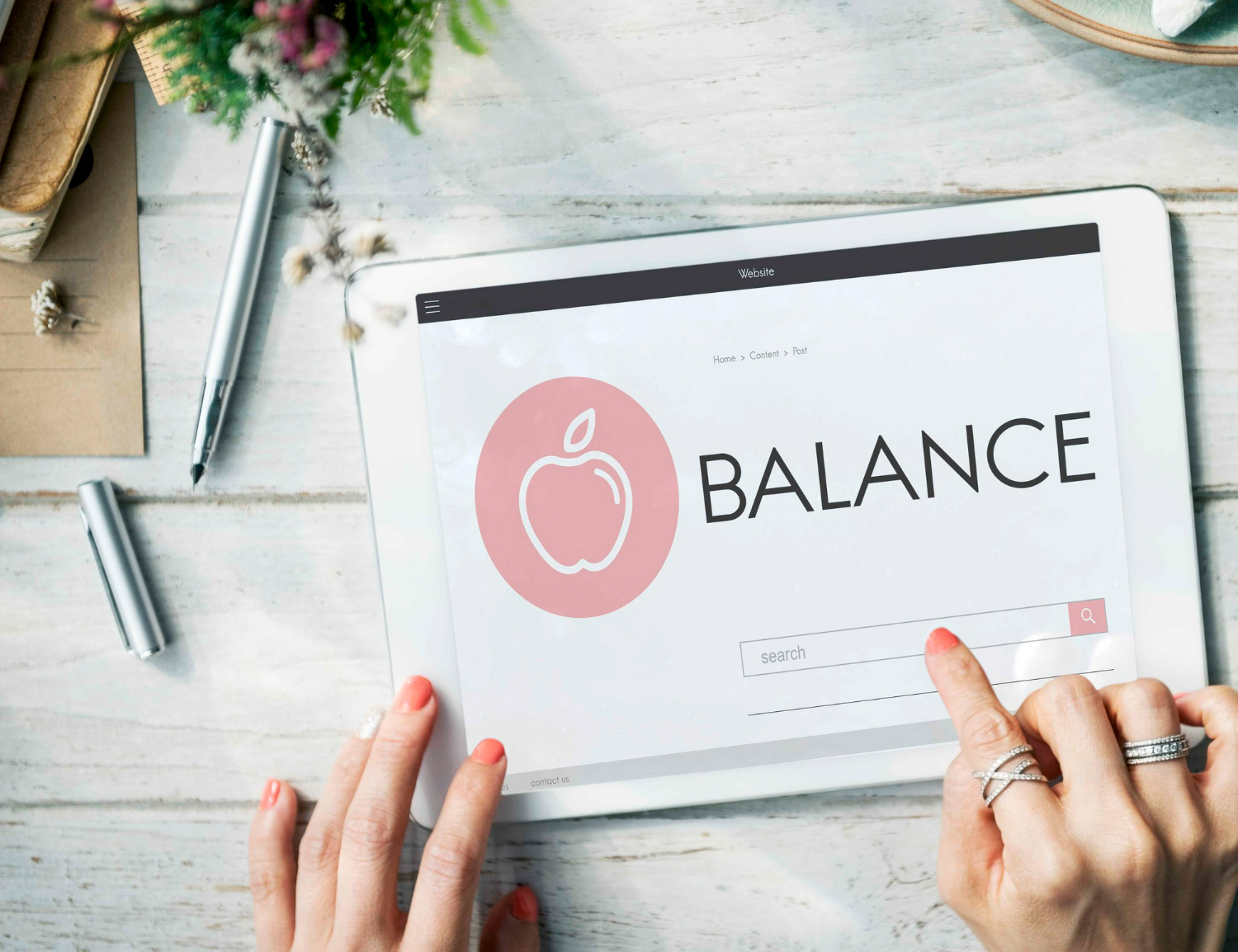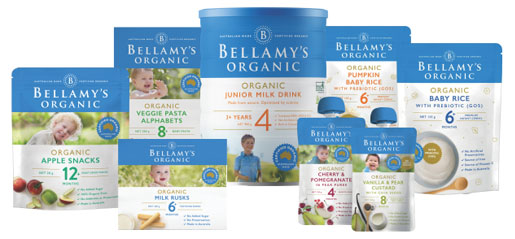10 Ways to Teach Your Kids About Organic and Healthy Eating
As a parent who cares for the wellbeing of your kids, you’ve likely done your research around healthy eating and organic food. You understand that eating fruits and vegetables over sweets and chocolates results in: increased energy, improved mood, regulated weight, greater longevity, better heart health, stronger teeth and bones, better brain health and improved energy. But do your kids understand what food is good for them?
Teaching kids about positive eating behaviours early in childhood sets them up for healthy eating habits throughout life. Explain in detail why you choose the options that you do and they’ll build connections with the food in front of them. Don’t just give them healthy food – tell them why you are giving it to them and what benefit it has on their body.
Parents often underestimate their role in the development of their children’s relationship with food. The first step in positively enforcing healthy eating habits is acting as a role model, but to get children to take ownership of their health and well-being, they must understand the importance of healthy eating habits. Having this information connects them with food in a way that observation simply can’t do.
What you can do
- Make statements as you eat
When you eat foods from the five food groups, talk about what they are doing for your body. Start this behaviour early and it becomes second nature.
“These carrot sticks contain a super nutrient called beta-carotene that helps my eyes stay sharp and focused”.
“These strawberries are so sweet and delicious. They’re also boosting my immune system to stop me from getting a cough or cold.”
“Oats are a whole grain that are so packed with nutrients that they are one of the best foods you can eat!”
“I’m giving you an orange because it’s got lots of vitamin C. We need vitamin C to protect our body’s cells and to help keep us healthy.”
2. Grow your own
As parents, we have a responsibility to close the gap between the food we serve on plates and where it comes from. Yet according to a UK poll of 1,000 children, 5{72bd9f2abfd9a42ad8daa505ad4c134144a2b20626506137b848ab4cf99aee2d} of children think that strawberries grow in a fridge, a quarter of kids don’t know that carrots grow underground, and nearly 80{72bd9f2abfd9a42ad8daa505ad4c134144a2b20626506137b848ab4cf99aee2d} of kids are unaware that broccoli grows on a plant!
To give kids an appreciation and understanding of food, nothing beats growing your own. Your kids can learn to nurture the earth with warmth and sun and will gain a sense of responsibility to spike their interest in the foods they eat. Grow foods that crop quickly and can be eaten straight from the plant like tomatoes, strawberries and peas. Choose recipes and salads that require your kids to pick and snip, like homemade pizza using tomatoes and basil grown by themselves.
Growing your own doesn’t have to be daunting, you just have to encourage your kids to get involved in the planning process and then give them responsibility by offering them their own section of the garden. Grow fast-growing beginner plants such as mint, leafy greens, zucchini, cherry tomatoes and radish, and encourage regular watering, weeding, checking for pests and harvesting.
If you don’t have a garden where you can grow your own, visit a farm or pick-your-own farm to show them first hand how different fruits and vegetables grow.
3.Ask questions
As you eat and shop, ask questions to gauge your child’s understanding of food.
“What does the nutrition label say about the ingredients?”
Teaching your kids that the Nutrition Information Panel can help them make smart choices is a great way to teach them about a balanced diet. Some elements might be hard to understand, but you can teach your kids to compare two foods to see which one offers more fibre, less fat, or fewer calories per serve.
Ingredients are listed in order so you get an idea of how much of each ingredient is in the food. Have your child check food labels to ensure the first few ingredients listed are good ones. Limit foods that mention sugar in the first few ingredients.
“How many fruits and vegetables should we try to eat each day?”
Eating a good amount of fruits and vegetables each day is important. Not only are they nutritious, but they offer protection against a range of diseases like diabetes, obesity, heart disease and some cancers. The recommended daily amount is five portions of vegetables and two portions of fruit.
“Where was this made?”
With little farming land and limited fishing grounds, Singapore imports more than 90{72bd9f2abfd9a42ad8daa505ad4c134144a2b20626506137b848ab4cf99aee2d} of its food. Local farms only produce 8{72bd9f2abfd9a42ad8daa505ad4c134144a2b20626506137b848ab4cf99aee2d} of vegetables, 8{72bd9f2abfd9a42ad8daa505ad4c134144a2b20626506137b848ab4cf99aee2d} of fish, and 26{72bd9f2abfd9a42ad8daa505ad4c134144a2b20626506137b848ab4cf99aee2d} of eggs, and relying so heavily on imported food creates challenges for the population of Singapore. Given our love of good food, it’s important we teach kids appreciation for where food is coming from so that it can continue to be in steady supply.
The top three overseas sources of vegetables for Singapore are Malaysia, China and Australia. The top three overseas sources of fruits for Singapore are Malaysia, China and the US.
“What is your tummy telling you? Is your tummy still hungry or happy?”
Eating a healthy, balanced meal starts with understanding what is considered a healthy sized portion. Portion control is an essential part of a healthy diet. If you’re not sure how to teach portion control, consider an easy-to-understand visual guide like My Healthy Plate.
4. Read books together
As we grow more conscious about healthy eating and organic foods, more and more entertaining children’s books aimed at building strong connections with healthy foods are written. Among some of the best are:
See Inside: Where Food Comes From by Emily Bone is a lift-the-flap book showing food produced on farms, in the sea and in greenhouses, and the importance of wheat, rice and corn around the world. There’s a map with flaps showing where the things we love to eat, including chocolate and tea, come from.
The Vegetables We Eat by Gail Gibbons is stock full of delectable information and includes everything you need to know about the rainbow of vegetables, with lots of colourful illustrations as well. Parents might even learn something too!
How Did That Get in My Lunchbox?: The Story of Food (Exploring the Everyday) by Chris Butterworth shows you the journey of some common foods, from planting wheat to mixing dough, machine-squeezing fruit to picking cocoa pods.
Growing Vegetable Soup by Lois Ehlert is about how a child who grows a tomato is much more likely to be excited about eating that tomato, sun hot from the garden. This book shows the garden cycle, and also includes a healthy recipe for vegetable soup!
5. Activate the power of the mind with positive affirmations
It’s important when talking about food to children that you keep the language positive. Avoid negative language such as ‘bad’ or ‘fattening’ and instead refer to these foods as ‘occasional’ or ‘extra’ foods.
Positive language influences the subconscious mind and activates its powers. A positive statement or affirmation can make you energetic and active, putting you in a better position to change the way you think and behave. Honest phrases like the below can help instil an understanding of why we look after ourselves with food.
“I am getting well nourished in preparation for the day ahead of me.”
“I am fortunate to have access to healthy organic food.”
“Eating right is easy and fun. I love my body and I take good care of it by eating well.”
6. Have fun with food
You only have to see how quickly children gravitate towards brightly packaged foods or foods that contain toys to know that “fun food” is a big drawcard. By creating funny faces with your dishes, by chopping fruits and vegetables into shapes, and by making your meals as interactive as they can be, healthy food can be fun too.
Making food fun is easy when you incorporate these factors:
- Colour –Bright, colourful foods are naturally more appealing to children. Why not make a fruit rainbow?
- Interests –Maximise your child’s interests and food is instantly more inviting. If your child’s favourite shape is a star, try cutting foods into star shapes.
- Funny names –Rename boring vegetables with funny names to make them more appealing. Broccoli can become “baby trees” while a green smoothie could be a “Ninja Turtle” drink.
- Unusual presentation –Instead of just plonking food on a plate, get creative. Make vegetable kebabs using skewers, serve “big” food miniature style, or turn your smoothies into ice blocks.
7. Play games
When you’re out shopping, consider playing games based around healthy food choices. One idea would be to challenge your children to find the healthiest item in each aisle. Look at their choices carefully and if they are right, ask if they would like you to purchase it to try it at home. If they are wrong, talk about why it might not be so healthy and look for better alternatives.
Another idea would be to play “healthy word bingo” and get kids to look for words such as superfoods, all-natural, organic, fresh, antioxidants and probiotics. Once they mark off all the words on the card, they can choose something healthy that’s not on the shopping list.
Alternatively, play nutrition-themed bingo at home using online printables, or play “shop” with your little one and set up a fruit and vegetable store.
8. Offer healthy colouring books
There are so many colouring books around, and what better way to teach them about healthy eating than by colouring in healthy foods? Choose activity books and colouring books that represent healthy and organic living. Teach them about the different items in the book as they colour them in, and then make a game of cooking the foods that they coloured in that day.
9. Visit the farmers’ markets
Check out your local area for farmers’ markets. They’re a great place to take the kids to see the massive amounts of healthy and fresh produce available. Ask them to name the vegetables and fruits as you look around. Farmers’ markets are also a great place to teach older children about sustainability and how buying from local sources helps support local farmers and a healthier environment.
10. Plan together
To get your kids on the path to discovering healthy foods and making healthy choices, begin asking them to plan their own lunchbox for school. It’s best to plan either the night before or for the week ahead (so you can get the grocery shopping done for the week), and sit down together to decide what they will have for lunch the next day. Prepare lunch boxes the night before and together when possible. Children who are old enough can pack it themselves, while younger children can help by peeling or cutting fruits or vegetable sticks.
By involving your child in the process you can also talk to them about the lunchbox choices of their friends, and find alternatives to the lollies/processed foods their friends might be eating so that your child doesn’t feel that they are missing out on anything.
If you want your child to grow up making smart food choices, it pays to arm yourself with some of these ten top tips for teaching kids about healthy food.
Featured post
-
05 Diet Plans That Are Good For Your Health
31/07/2022
-
Best Times to Sleep for Adults & Children
01/06/2022








